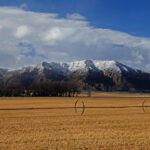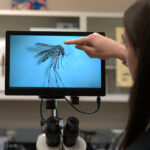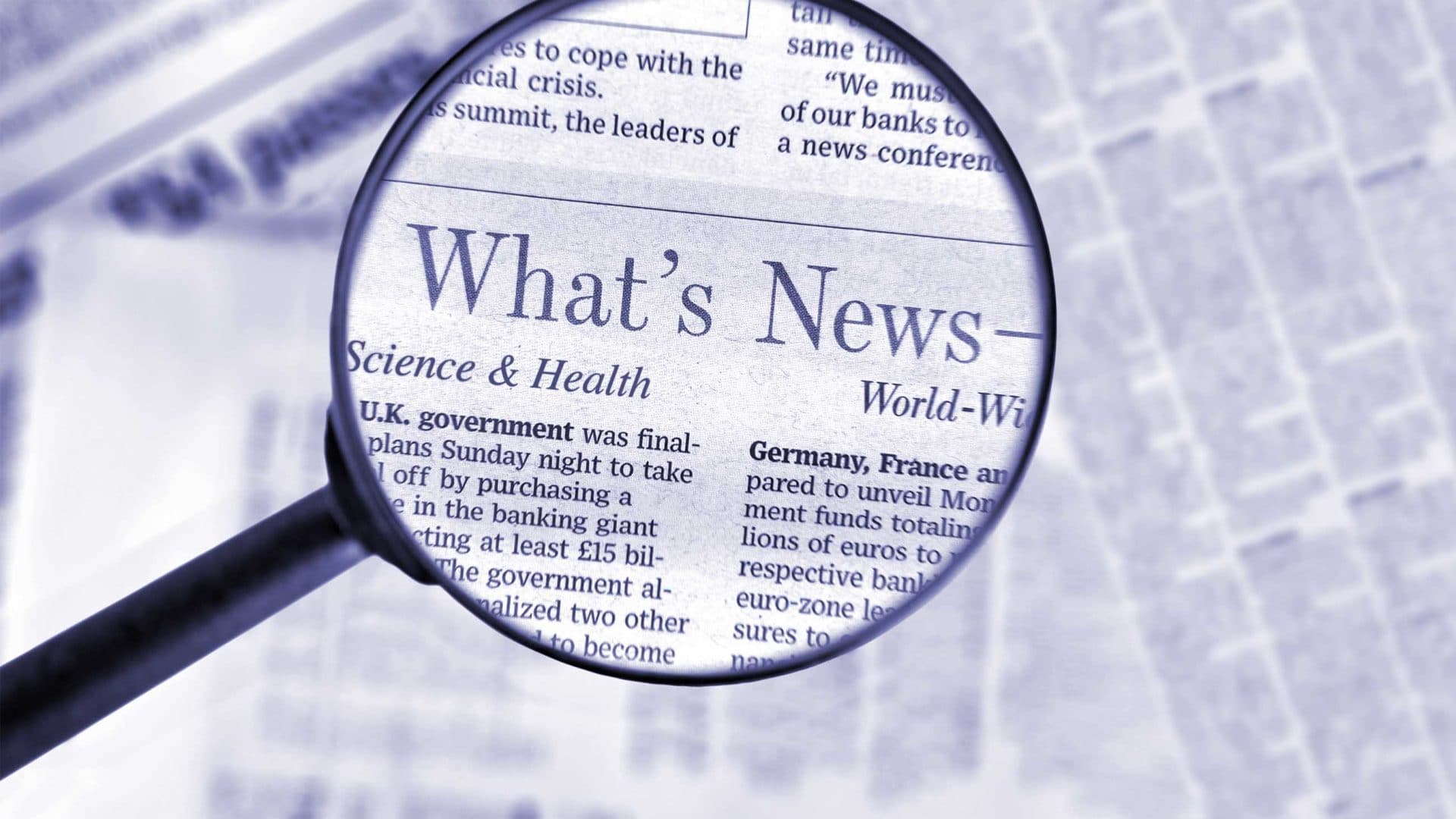For Erin Zimmerman, a plant molecular biologist turned freelance science writer living in Ontario, Canada, a recent plant science conference presented a rare opportunity to meet scientists working in the field and to gin up some story ideas. “It’s unusual for a conference in my niche to be within a day’s driving distance, so I was really excited to be going,” she said.
MATTERS OF FACT: Exploring the intersection of science & society.
But she hit a roadblock. The conference organizer would only grant her a press pass if she allowed researchers she reported on, along with the conference committee, to review anything she wrote. Such an agreement would “run contrary to the editorial policy of most reputable outlets,” she emailed back, copying the department head and university press office. For reinforcement, she linked to a 2018 Nature article explaining norms for scientists’ interactions with the press.
It was to no avail. In a series of haranguing emails, the older scientist dismissed journalistic standards, slammed scientific publishers like Nature, and criticized Zimmerman’s own work — including a story written for Undark. (To date Zimmerman has been published by Smithsonian.com, New York Magazine’s “The Cut,” and The Los Angeles Review of Books, among other publications.). Writers working for the university and trade publications submit their work for review, he reasoned, so journalists should too.
“His tone felt patronizing because he seemed to be explaining to me how my job is supposed to work, and inaccurately at that,” Zimmerman said. Her duty as a journalist, she said, “isn’t to promote the university’s research output, but to scrutinize it. It’s an important distinction.” The other university officials copied on the email exchange remained mute.
Zimmerman declined to publicly identify the scientist or university for fear of damaging her nascent writing career, but her experience provides an extreme example of a common misconception regarding science journalists. Some people — including, it would seem, this conference organizer — believe that a science journalist is merely a translator whose job is to convey scientific information uncritically, and in a way that’s compelling and makes sense to non-technical readers.
It’s true that effective and engaging translation of technical information is a skill any science journalist ought to have — but the job does not stop there. We use our skills to capture the beauty and complexity of scientific endeavor, to be sure, but also its shortcomings, its failings, its biases, and conflicts. We ask critical questions about sample-size and research design, and we communicate why those aspects of science matter, too. And we do so on behalf of readers, not scientists. “What we do in my view is especially important,” said Dan Fagin, director of the Science, Health, and Environmental Reporting Program at New York University, “because our responsibility is solely to the consumer of information.”
If some people think otherwise, they might be forgiven. Following the collapse of print journalism’s business model supported by advertising and subscriptions, a wild and diverse ecosystem of publications has sprung up online — many of them concerned with science in one way or another. Welcome as that might be for young freelancers like Zimmerman, this has also made it more difficult to sort out what qualifies as journalism, what doesn’t, and whether the public even cares. Would the average reader be able to articulate what makes a story published by Pulitzer Prize-winning InsideClimate News, for example, different from one published by a popular site like Massive Science, which is written entirely by scientists themselves? And more potently: Does it matter if readers can’t tell the difference?
At the moment, not everyone agrees, and while Zimmerman’s experience may or may not represent the fallout of growing public confusion on this question — indeed, she may well have been simply dealing with a jerk — it does offer an opportunity to meditate on the multitude of channels that now deliver scientific information to the public. And perhaps to ask: Is real journalism getting lost amid the din?
“You know we’re kind of like the awkward child of journalism and science communication,” said Massive’s co-founder and chief executive, Nadja Oertelt. “We have to just become comfortable with that position, and I think other people have to become comfortable with what we’re doing. For the most part, everybody loves what we’re doing. I think they’re just kind of like — a little bit befuddled as to what to call us.”
From 2008 to 2017, newsrooms eliminated nearly one out of four staff positions, according to an analysis by the Pew Research Center. And it wasn’t that long ago that media watchdogs worried that science reporting itself was on a path to extinction.
Since that time, however, we’ve witnessed a great blossoming of online publications offering real journalistic coverage of science and technology — from Spectrum and Quanta to Quartz, InsideClimate News, and yes, Undark. “This is a golden age that was never supposed to happen. It was unpredictable,” said Thomas Hayden, director of the Earth Systems, Environmental Communication Program at Stanford University. In a 2018 commentary published in the journal Frontiers of Communication, he and his wife, Erika Check Hayden, director of the Science Communication Program at the University of California, Santa Cruz, credit science writers like Zimmerman who are still fighting to do the work.
“In the face of the widespread decline of traditional publications, such as regional newspapers and national newsmagazines, and a broader media ecosystem awash with low-quality, sensationalized, sometimes intentionally misleading material,” the pair wrote, “science and environmental journalists and their allies have stood up to assert the value of rigorous, factual, independent coverage and scrutiny.”
Whether that will last, of course, is an open question, and Hayden himself notes that many of these new enterprises, Undark among them, are propped up by philanthropists and foundations — as well as freelancers like Zimmerman willing to eke out an uncertain livelihood. “It only exists because of the passion and determination and flexibility of its practitioners,” Hayden said. “And it will not persist without some change.”
One change that’s begun to surface: Websites such as Massive Science and The Conversation, which are reimagining the role of journalists. Founded as a not-for-profit organization in Australia in 2011, the rapid expansion of The Conversation to seven other countries speaks to the success of the model, which employs mainly journalists (though backgrounds vary) as editors who then help scientists to write stories and essays about their fields themselves. The Conversation U.S. draws about half of its funding from universities and research institutions; the other half from philanthropy, said general manager Beth Daley. Articles are free to view and republish.
Contributors — who come from all areas of academia, not just the sciences — are not paid, but they benefit from the chance to reach a wide audience. The articles are distributed nationally through the Associated Press and are typically republished at least a dozen times, potentially reaching hundreds of thousands of readers, Daley said.
Massive Science, a hip, young cousin to The Conversation, was founded 2017 as “a community of scientists telling stories about all the truth and beauty in the universe.” About 1,100 scientists — mostly graduate students and early-career researchers — pay a one-time $10 membership fee to join, giving them chance to work with editors on articles, among other perks. The first two articles are considered training, but after that, contributors get paid $65 per article, a rate that increases the more they contribute. Non-members can also submit articles, but don’t get as much editorial instruction said Oertelt.
Massive used to be free to re-publish, but the outlet recently started charging a licensing fee. Other sources of income include advertising, training workshops, and communications work for science organizations and companies, Oertelt told me. They also sell science-themed items, including posters of female scientists, postcards, and, in a nod to their playful approach to outreach, a Women of Science Tarot Deck.
Both outlets share a goal of connecting the public to research and ideas that might otherwise remain locked away in academia. The idea “in its grandest form,” said Daley “is to democratize knowledge.” They also strive to counteract the stereotype of a scientist as a white male. Massive seeks “a diversity of people from different backgrounds who have expertise but who maybe don’t have a safe space to build their voice,” said Oertelt.
In addition, both outlets have a mission to teach academics the editorial process and how to translate their research for non-scientists. “It’s mutually beneficial in the science journalism ecosystem because those are scientists who now have a voice and can be sources for your stories later down the line,” said Oertelt.
It all sounds good, but is the material published by The Conversation and Massive Science journalism? Absolutely, said Daley, who pointed out that The Conversation staffs experienced journalists who adhere to strict standards. And for his part, New York University’s Dan Fagin agreed. “It’s things that journalists would do in the past when they were writing an op-ed,” he reasoned, “and that is definitely journalism.”
But that sort of broad-minded view of journalism is not shared by all of its veteran practitioners. Among these is Gary Schwitzer, an adjunct associate professor at the University of Minnesota School of Public Health and the longtime publisher of the recently shuttered Health News Review, a nonprofit website that evaluated journalism and other communication about health care. At my request, Schwitzer reviewed a couple of recent health stories published on The Conversation website. “It’s a good idea, well executed,” Schwitzer initially said.
Still, he doesn’t consider it journalism. Neither of the stories Schwitzer looked at interrogated the subject as a good journalist would — even in an opinion piece, he argued. (For the record, Undark republishes some material from The Conversation, labeled as opinion.)
For example, a pharmacologist’s take on purported healing compounds in marijuana made unsubstantiated claims based on weak and contradictory evidence, Schwitzer pointed out. And a commentary about the Food and Drug Administration’s approval of esketamine for treating depression, written by a psychiatrist on the review panel, omitted serious concerns about effectiveness, safety, and cost covered in news stories and other commentary.
Those messy details about uncertainty and risk matter, Schwitzer said, because communication influences what consumers — and indeed, voters — think, and how they behave.
In a recent study of 900 patients and caregivers, Schwitzer and colleagues found that people who read a news story about a treatment that overemphasizes effectiveness, or omits limitations and risks, are more likely to consider that treatment beneficial than those who read a story free of “spin,” and that endeavored to include vital caveats and shortcomings in the research. Can scientists — even under the watchful editorial eye of journalists — be expected to communicate not just the good and exciting stuff about what they do, but the bad and boring, too? Because in science, the bad and boring stuff matters — perhaps more than anything else.
The reality today is that ads and subscriptions can’t support enough science journalism to satisfy what consumers want and society needs, Fagin told me. That means more scientists and non-journalists will be stepping into other communication roles. And it’s vital for the professional journalism community to steep these new content providers in the journalistic values of independence, clarity, fairness, and transparency, he said.
Even in a diverse and welcoming communications ecosystem, however, the distinct role of journalism matters, Fagin added. Scientists, he said — and the institutions that employ them — are subject to the same biases and flaws as the rest of us. “It’s so incredibly important that communication about science includes as much independently reported information as possible.”
Independence and accountability are vital to a functioning democracy, Fagin said. “Only science journalism can consistently deliver that.”
Of course, none of the more than half-dozen media experts I consulted for this column, nor the scores of others I interact with in my professional life, have a good idea for how to pay for it. For the next few years, Hayden said that he thinks it will come down to the decision-making of institutions and philanthropists with a mission to connect people to science. And for his part, Schwitzer said that he knows first-hand the uncertainty of relying on the largesse of benefactors. Last December, after nearly 13 years of publishing, he had to let go his staff at Health News Review when the organization lost its major funder.
For Zimmerman, though — still fresh to the field of science writing — this brave new media landscape is brimming with opportunity. “I wouldn’t have necessarily been able to enter this career a decade earlier,” she said. “There was, for better or for worse, a lot more gatekeeping.”
While she was barred from one science conference, there are plenty of other places her career can take her. She has moved on to new projects that include both journalism as well as communications work for science publishers, which she said pays promptly and well.
“I’m pretty content doing both,” she said, “and I think that that might just be the future for freelance science journalism.”
Teresa Carr is an award-winning, Texas-based journalist with a background in both science and writing, which makes her curious about how the world works. She is a former Consumer Reports editor and writer, and a 2018 Knight Science Journalism Fellow at MIT. In 2019, she began penning the Matters of Fact column for Undark.
UPDATE: A previous version of this piece used incorrect spelling to identify Erika Check Hayden. Her name has been corrected.











Comments are automatically closed one year after article publication. Archived comments are below.
“The older scientist dismissed journalistic standards.” Maybe, just maybe, the older scientist had been burned in the past by an unchecked journalist. I worked in the media for almost four decades and watched many a story mangled. All too often journalists want to write and not to report. They like stories. And it is amazing how often journalists tune out when the story they are finding doesn’t reinforce the story they are intent on writing. Journalists are too protective of what they perceive as their “turf” than of getting the story right. Accuracy should be the first goal. Sadly, when a story is being slapped together in minutes to meet deadline at a daily paper, errors are often made — errors that might be quickly caught and corrected by the researcher, or whomever, involved.
Very interesting that this article totally ignores the complete bastardization of journalistic ethics in writing about “Climate Science.”
Climate Science today has little to do with “science,” and nearly all to do with political policy advocacy.
Journalists toe the line in dealing with “climate.” Or they are attacked.
Climate “Scientists” write books on Public Relations (they call it “Science Communications” or other silly terms–but it’s all about spinning for political points).
Fascinating and thought-provoking. I hope we find ways to sustain science journalism. Sorry to hear about the demise of Health News Review and I will be looking into the web publishers mentioned by the author. In the science community, we are taught to welcome/accept debate and uncertainty. This appears to bother or confuse people not steeped in the Way of Science. I could hope that the more people see the way scientists work and think, it will at least be less misunderstood and accepted. Journalists bring science to a wider audience and give a hearing to work that might be tamped down by the “perceived wisdom of the day”. That is why we can’t just depend on peer review to keep us honest. Sharing ideas between scientists is vital and fun. Journalists then help us to communicate our discoveries and keep things in perspective. We reach for the stars but need to have a stable ladder to stand on.
While there’s emotional value to Zimmerman’s experience leading off this story, it also offers a really unacceptable situation. We’re told she’s declining to identify the offending researcher and institution for fear it will negatively affect “her nascent career.” But if we’re to hope that this kind of stupid response from a researcher/institution will cease, then victims need to be transparent and name names. Citing an example without disclosing the guilty party does no one any good and may do additional harm by suggesting other individuals and institutions function in similar fashion. At some point, people facing such refusals need to put the larger welfare ahead of their own. As a long-term PIO, I’d want to know if one of my faculty, or even my institution, was behaving so. Otherwise, I’d have no way of making changes that would benefit journalists and the public alike.
I appreciate Earle’s wise words on the need for disclosure. Universities and other public institutions enjoy the respect of society and tax breaks. If their professors are doing science, much of it is publicly funded. They have a duty to be open to public scrutiny, and that means journalists should not be letting them “review” what has been written before publication. If the journalist gets it “wrong” according to the institution or individual scientist, that’s unfortunate, but the fact is institutions and individuals always have a self interest.
Thanks for the concurrence, Shannon! My gripe is really twofold: Researchers, be they primary investigators of a project or heads of conferences, have only one role in dealing with reporters — providing information! It’s the reporters’ role to determine what they write without any review (except to insure reasonable technical accuracy of the science) from the researcher. At the same time, the reporters’ obligation is to tell a complete, unbiased story, one adequate in context that allows readers to make informed decisions about the story’s issues. In this case, without the offending researcher or meeting being identified, readers may assume this problem is rampant when it maybe an isolated case. Forward-thinking institutions and PIOs can do nothing to remedy the situation without transparency. While Teresa’s story is interesting, her failure to provide the essential identifications in the opening reinforces the possibility that other essential information was also omitted, calling into question the credibility of the entire piece. Reporting well is hard work. In this case, I think the anonymity of the situation in question detracts.
While there’s emotional value to Zimmerman’s experience leading off this story, it also offers a really unacceptable situation. We’re told she’s declining to identify the offending researcher and institution for fear it will negatively affect “her nascent career.” But if we’re to hope that this kind of stupid response from a researcher/institution will cease, then victims need to be transparent and name names. Citing an example without disclosing the guilty party does no one any good and may do additional harm by suggesting other individuals and institutions function in similar fashion. At some point, people facing such refusals need to put the larger welfare ahead of their own. As a long-term PIO, I’d want to know if one of my faculty, or even my institution, was behaving so. Otherwise, I’d have no way of making changes that would benefit journalists and the public alike.
Dear Teressa,
Your article iş very infirmative. It is a pitty to read that science journalism is declining.
I am trying to promote science Journalism in Turkey on academic level.
Please inform me of the travel fellowships on the issue.
Kind regards.
Dr. Gülsen Saray
So interesting that when an expert who usually scrutinizes journalists’ articles, does the same for articles written by scientists, he still finds faults in them. One might have assumed that if you’d only let scientists write about science themselves, we’d reach nirvana.
I cannot tell from your post if you are being sarcastic or not and/or about what, and why–the post did not make any statements that could be evaluated, only hints about your feelings about things, which are so lacking in transparency that your meaning is totally obfuscated–but if you meant to suggest, seriously, that it would be Heaven on earth if someone with the power to decide who writes about what, not only in their particular organization but by exercising power over the whole country and all outlets for speech, made a law forbidding anyone but scientists to write about science–well, 1) very fortunately, the First Amendment expressly forbids the making of any such law by Congress, the only body empowered to make national laws, and 2) that is like exactly like saying it would be Nirvana if that illegal law only let investment bankers/the communications departments of JPMorgan Chase, etc. write stories about what’s really going on on Wall Street, or only let politicians write about politics. Only the Trump Administration write about the Trump Administration. Nirvana? No, unlawful at the highest level according to the document that is the basis for the rule of law at least in the US. Because the Founders, as early as 1792, expressly protected free speech and a free press in its very first amendment. The reasoning behind that, as explained by James Madison and others involved in authoring the very earliest versions of the Constitution, was that both are essential for the existence and preservation of a democracy. I agree with them. Full disclosure: I am a member of that free press and, specifically, a science journalist; though I can no longer make a living at it, like many of my fellows in what is rapidly becoming the post-journalism era. Aka your “nirvana.” (I’m also assuming you are using “nirvana” as a synonym for non-Buddhist ideas such as Paradise, Heaven, etc. If you do mean nirvana in the Buddhist sense, i.e. the blessed state of oblivion and eternal freedom from the threat of further existence in, or at least deception by, the illusion that “material reality” is not an oxymoron, then you are right. But from that point of view, science, which presumes that material reality is not only not an oxymoron but in fact worth investigating as though the results would be enlightening, is wrong on both counts and only worth pursuing if it reduces the suffering of us unfortunate incarnates. That I disagree with. But then, I’m the sort of person who chose journalism, specifically science journalism, as a career over the much more lucrative and, as it’s turned out, secure one I could have had if I’d actually attended Harvard Law School after being admitted. thus, again biased.)
Fascinating and disturbing